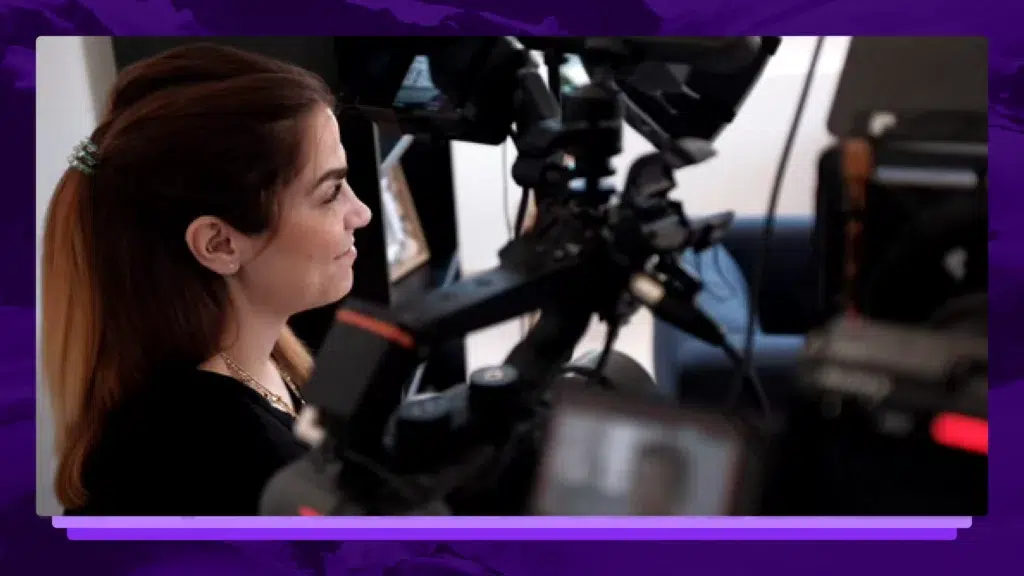5 Tips For Interviewing Talent On-Camera
How do you get the most out of your talent when interviewing on-camera? We have a few thoughts.

Some interviews practically run themselves. If the talent is engaging and talkative, your interview can basically be a semi-guided conversation that feels like the entire thing happened organically.
Others, not so much.
Regardless of whether your talent does a lot of the heavy lifting, it’s ultimately the interviewer’s job to make the interview interesting, the talent seem engaging, and the conversation come off naturally.
To consistently make your interviews pop and your talent look good on camera, here are a few things you should implement into your interviewing technique. Do these a few times and they’ll quickly become second nature.
1. Avoid Yes or No Questions
Yes-and-no questions can bring a conversation to a sudden and uncomfortable halt. Train yourself to ask only open-ended questions, even if the answers require the talent to pause and think for a second. If there is a definitive and obvious answer to the question, less-experienced interviewees will undoubtedly use it, which isn’t very insightful or illuminating. For instance:
“Do you like whales?”
“Yes.”
This is a dead-end road. A simple switch to “What do you like about whales?” will get you a much better result. These seem like simple changes, but we don’t realize how often we default to those yes-and-no questions.
2. Capture Answers in Complete Sentences
In many final edits, the interviewer is never on camera or even acknowledged. As far as the viewer knows, the talent is simply talking to the audience. In those cases and most others, every “answer” requires the context of the question baked in. Experienced talent might know this, but even they might need guidance on how to “properly” ask a question. Interviewees who are new to the process certainly need you to remind them: Rephrase the question as a statement on your answer.
Why does this matter? If you ask the talent what their favorite animal is, and they simply answer “Humpback whale,” viewers might be confused. Or worse yet, that answer would end up on the cutting room floor. If you’ve prompted them to rephrase the question, their answer becomes the sound-bitable “My favorite animal is a humpback whale.” Remind your interviewee that this is not a normal way of speaking in every day life — it’s completely fine if they forget and need to take another stab at the answer!
3. Go Analog — Avoid Screens
No matter how hard we try to be engaged with a laptop or phone open, there’s something about a glowing screen that takes you, and the talent, out of the moment. I recommend going old-school with your interview questions and writing them in a notebook as opposed to using your laptop or phone for notes and prompts.
Writing your questions on paper serves more than one function. First, a notebook is less intrusive to your talent. Second, the process of actually putting pen to paper helps you get a better feel for your own agenda, which in turn allows you to organically guide the conversation in new directions.
That’s not to say your nose should be buried in your notebook; be engaged at all times with only quick glances at your questions or brief pauses to scribble notes. But again, writing your questions out makes it so you can focus more on your subject rather than your own pre-written questions.
4. Make Sure Your Eye-line is Correct
This is another item that seems obvious but can derail an interview pretty easily: Make sure your talent knows where to look. Are they looking at you, the camera? The other camera? We’ve seen all sports of styles here; sometimes you change the eyeline between questions, sometimes it’s the same throughout. A common setup is the interviewer sitting directly behind the camera so that it’s easier for the talent to look at the camera, but even then they might need to be reminded. Those few inches might really matter to the final edit.
If the talent is supposed to talk directly to you, you have another reason to take your eyes off of the screen.
5. Put Yourself in the Audience’s Shoes
In the end, it’s most important that your audience understands what your video interview is trying to accomplish. As your talent is answering each question; take notes if there’s something you’d like to circle back to after they’re done speaking. Don’t hesitate to take a breath and consider the answer, to ensure that it not only answered your question but answered it in the proper context for the audience. Did they rephrase the question in the answers? Did they use an acronym the audience won’t understand?
Think about each specific answer in relation to the story you’re trying to tell. It’s ok to gather yourself and consider whether or not you got the answers you needed. Take a 5 minute coffee or water break and make sure you’re covered.
And remember – when in doubt, just ask the question again!











.webp)



